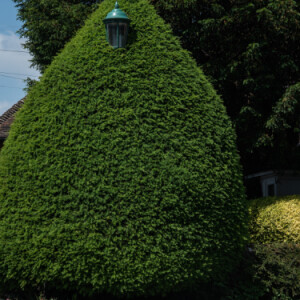Eye of A Needle (Stick Man), Winchelsea Beach
On one of our previous trips to the seaside we saw a sign for Winchelsea Beach and determined that we would pay it a visit the next time we headed to East Sussex. Today was that day, so we left a bit earlier than we usually do (about 9.30ish) and got there via a slightly convoluted route (yet more roadworks had to be negotiated) and a brief stop off in Rye for a cappuccino and a pastry.
One thing we didn't know is that Winchelsea Beach is a small coastal resort in its own right. The nearer you get to the beach itself the more holiday parks you see and the more static caravans that appear. We chose to go a bit further along as you can only access any of them if you are a member. We parked the car, took the steps up and over the sea wall and were met by this huge expanse of shingle and sand. It was a glorious vista and the beach was almost completely empty apart from a man hitting some balls along the shoreline! It was then I saw this seaweed covered stake, left over from a long departed groyne, with a hole in it and realised, if I was quick, I could capture him through it. I only managed to get the one image (please view large for the full effect!) before he picked up his club (and his many golf balls) and headed up the shingle. I didn't realise until later I'd captured my brother, camera in hand, as well!
Winchelsea itself has a fascinating history. It was, of course, built by the sea and was a very important medieval trading port until in 1287 when it was completely destroyed by the worst of a century of storms. Because it was vital to to the realm of King Edward I he decided to save the community by transplanting the town to the safety of the Hill of Iham, a cliff-grit promontory presenting a formidable obstacle to sea and foreign invader alike .Earthen ramparts and ditches, town walls and massive gates were added to reinforce it so it became, to all intents an purposes, a protected fortress. It also gained membership of the Cinque Ports and soon thrived as a place for shipping and shipbuilding, travel, trading and fishing but also wrecking and piracy. This was not to last, however, as it was hit badly by the Black Death and then the harbour on which the town relied on for its prosperity silted up and so it retreated into economic irrelevance as far as these trades (and illegal activities) were concerned. The town now sits quite a few miles inland but you can still see the sea from the top of the hill. Two of the roads that lead into it pass under the Strand and Pipewell Gates, originally built as part of the town walls.
The town has a remarkable grid pattern layout which has survived to this day and was the accepted design for new towns built under the patronage of Edward I. A lot of the houses also feature deep cellars (you can even book a tour of them!), a leftover from its days as a trading port. It is one of the most beautiful ancient towns (although it feels much more like a village) with lots of whitewashed houses and a stunning church. On our walk round the town I spotted a man doing some gardening and I loved the fascinating feature of this lamppost almost lost within a beautifully manicured hedge (see extra image). By this time it was getting quite hot so we headed to to the New Inn for a cooling pint each sitting in its lovely secluded garden. It was a great way to end our trip. I would throughly recommend a visit to Winchelsea if you are in the area.


Comments
Sign in or get an account to comment.


